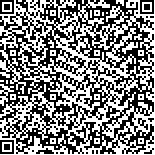| 本文已被:浏览 1384次 下载 1079次 |

码上扫一扫! |
|
|
| 南极夏季宇航员海浮游动物群落结构及其与环境因子的关系 |
|
牟文秀1,2,3, 杨光1,2,4, 郝锵5, 徐志强1, 李超伦1,2,3,4
|
|
1.中国科学院海洋研究所 青岛 266071;2.青岛海洋科学与技术试点国家实验室 青岛 266237;3.中国科学院大学 北京 100049;4.中国科学院海洋大科学研究中心 青岛 266071;5.自然资源部第二海洋研究所 杭州 310012
|
|
| 摘要: |
| 基于中国第36次南极科学考察期间(2019年12月至2020年1月)于南极宇航员海使用北太平洋网(0.5 m2,330 μm)采集的浮游动物样品,对浮游动物的丰度、群落结构、优势种种群结构及其与环境因子之间的关系进行了研究。结果表明:2019/2020年南极夏季宇航员海浮游动物总丰度在8.93—102.00 ind./m3之间,最高丰度记录在宇航员海中部靠北区域,浮游动物主要由桡足类、磷虾、毛颚类、浮游被囊类等类群组成。调查海域桡足类丰度对浮游动物总丰度的贡献可达90%以上,其中、大中型桡足类Calanoides acutus,Metridia gerlachei,Calanus propinquus和Rhincalanus gigas分布广泛,而小型桡足类Oithona similis、Oithona frigida、Ctenocalanus citer、Oncaea conifera等在丰度上占比较高。通过聚类分析可将宇航员海浮游动物在区域上划分为5个群落,普里兹湾涡流、威德尔涡流、南极绕极流南界等物理海洋学过程是宇航员海浮游动物群落分布模式的主要控制因素。另外,生物环境匹配(Bio-env)分析显示,饵料(叶绿素a)也对该海区浮游动物的种群和群落结构具有重要影响。 |
| 关键词: 群落结构 浮游动物 宇航员海 南大洋 |
| DOI:10.11693/hyhz20210200043 |
| 分类号:Q958.8 |
| 基金项目:国家自然科学基金项目,41876217号;自然资源部南大洋专项,IRASCC2020-2022-No.01-02-02B,02-04-02。 |
附件 |
|
| THE ZOOPLANKTON COMMUNITY IN COSMONAUT SEA: COMMUNITY STRUCTURE AND ENVIRONMENTAL FACTORS |
|
MOU Wen-Xiu1,2,3, YANG Guang1,2,4, HAO Qiang5, XU Zhi-Qiang1, LI Chao-Lun1,2,3,4
|
|
1.Institute of Oceanology, Chinese Academy of Sciences, Qingdao 266071, China;2.Pilot National Laboratory for Marine Science and Technology(Qingdao), Qingdao 266237, China;3.University of Chinese Academy of Sciences, Beijing 100049, China;4.Center for Ocean Mega Science, Chinese Academy of Sciences, Qingdao 266071, China;5.Second Institute of Oceanography, Ministry of Natural Resources, Hangzhou 310012, China
|
| Abstract: |
| Based on samples collected using a Norpac net (0.5 m2, 330 μm) in the Cosmonaut Sea, Antarctic during the 36th Chinese National Antarctic Research Expedition (December 2019 to January 2020), the zooplankton community structure, abundance, population structure of dominant species and their relationship with environmental factors were studied. Our results show that total abundance of zooplankton in Cosmonaut Sea in the summer of 2019/2020 varied from 8.93 to 102.00 ind./m3. Zooplankton was mainly composed of copepods, krill, chaetognaths, and tunicates. Zooplankton abundance in each station was dominated by copepods (>90%). The large-sized copepods, such as Calanoides acutus, Metridia gerlachei, Calanus propinquus, and Rhincalanus gigas, were more widely distributed in the survey area, while small-sized ones, such as Oithona similis, Oithona frigida, Ctenocalanus citer, and Oncaea conifera were more abundant. Five groups of zooplankton community could be recognized based on cluster analysis and they were closely linked to local physical oceanographic processes (the Prydz Bay Gyre, Weddell Gyre, and the Southern boundary of the Antarctic Circumpolar Current). Food availability (chlorophyll a) also had an important impact on the population structure and community structure of zooplankton. |
| Key words: community structure zooplankton Cosmonaut Sea Southern Ocean |
